
Copyright 2012 by Meredith Corporation, Des Moines, IA. All rights reserved Published by Houghton Mifflin Harcourt Publishing Company, New York, New York Library of Congress Cataloging-in-Publication Data is available upon request. For information about permission to reproduce selections from this book, write to Permissions, Houghton Mifflin Harcourt Publishing Company, 215 Park Avenue South, New York, New York 10003. www.hmhbooks.com ISBN 978-1-118-34433-0 (pbk), ISBN 978-0-544-18617-0 (ebk) Meredith Corporation Food & Nutrition Editor: Jessie Shafer Contributing Project Manager: Shelli McConnell, Purple Pear Publishing, Inc. Art Director: Michelle Bilyeu John Wiley & Sons, Inc. Publisher: Natalie Chapman Associate Publisher: Jessica Goodman Executive Editor: Anne Ficklen Editor: Adam Kowit Senior Editorial Assistant: Heather Dabah Production Director: Diana Cisek Senior Production Editor: Amy Zarkos Design and Layout: Tai Blanche and Indianapolis Composition Services Manufacturing Manager: Tom Hyland Our seal assures you that every recipe in Diabetic Living Diabetic Slow Cooker has been tested in the Better Homes and Gardens Test Kitchen.
This means that each recipe is practical and reliable and meets our high standards of taste appeal. We guarantee your satisfaction with this book for as long as you own it.  v1.0313 Home Stretch Getting dinner on the table is often the last hurdle in a day of jumping from task to task. Thats why Im especially thankful for this collection of healthful and hearty recipes that makes my mealtimes a little calmer and evenings a little easier. The slow cookers in the Better Homes and Gardens Test Kitchen have been working overtime to dish out meaty stews and roasts, saucy sandwiches and pasta dishes, and potluck-ready appetizers. The best part: All of these recipes have been carb-counted and boosted with nutritious ingredientsso theyre diabetes-friendly for you and tasty for everyone at the table! Ive been sneaking more than a few of these treasured recipes home to test on my pickiest taster: my husband.
v1.0313 Home Stretch Getting dinner on the table is often the last hurdle in a day of jumping from task to task. Thats why Im especially thankful for this collection of healthful and hearty recipes that makes my mealtimes a little calmer and evenings a little easier. The slow cookers in the Better Homes and Gardens Test Kitchen have been working overtime to dish out meaty stews and roasts, saucy sandwiches and pasta dishes, and potluck-ready appetizers. The best part: All of these recipes have been carb-counted and boosted with nutritious ingredientsso theyre diabetes-friendly for you and tasty for everyone at the table! Ive been sneaking more than a few of these treasured recipes home to test on my pickiest taster: my husband.
I can tell from his oohs and ahhs (and his scraped-clean plates) that this is a winning group of simmered dishes. Some standouts include a soothing bowl of . Whether you use your slow cooker for entertaining or easy dinners, potlucks or pots of leftovers, I know these recipes will bring comfort to your cravings and simplicity to your days. Enjoy!  Jessie Shafer Food & Nutrition Editor, Diabetic Living
Jessie Shafer Food & Nutrition Editor, Diabetic Living 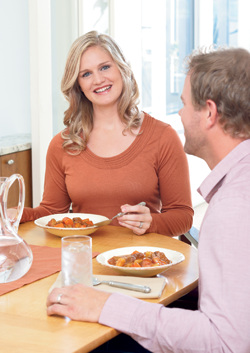
Whether youre feeding a crowd or only two,
we have recipes just your size! A favorite in my
home? The .  Slow Cooker Savvy Find out how to get the most out of this simple-to-use, time-saving meal maker. Meat Matters Never toss frozen raw meat directly into your slow cookerthe meat will thaw too slowly to remain safe to eat.
Slow Cooker Savvy Find out how to get the most out of this simple-to-use, time-saving meal maker. Meat Matters Never toss frozen raw meat directly into your slow cookerthe meat will thaw too slowly to remain safe to eat.
Use the cut of meat called for in the recipe. Slow cookers are ideal for less-tender cuts; substituting a cut that is more tender (and more expensive) wont make the dish better. Trim excess fat from meat and poultry before cooking. Brown the meat as directed in recipes. Doing so adds flavor and color to the dish and makes draining off excess fat easy. Skim fat from the cooking liquid or sauce before serving it.
The Veggie Story Because vegetables cook more slowly than meats, cut the vegetables into uniform pieces and place them closest to the heat source. Add dense veggies, such as carrots, potatoes, and parsnips, at the beginning of the recipe. Add tender veggies, such as green beans, spinach, and zucchini, at the end of cooking. Cook according to recipe directions or on the high-heat setting for 30 minutes or until they are tender. 3. Fill Er Up (But Not Too Full) To cook safely, your cooker needs to be filled at least half full but no more than two-thirds full.
If you omit an ingredient such as parsnips in a recipe, replace it with an equal amount of a similar ingredient such as carrots. If using a cooker larger than the recipe calls for, increase everythingfrom the meat and vegetables to the liquid and seasoningsproportionately, making sure the cooker is half to just two-thirds full. Cook for the time specified in the recipe. 4. Dont Peek! Put a lid on itand keep it there. (Thats why glass lids are handy.) Keep in mind that hot steam will gather on the inside of the lid. (Thats why glass lids are handy.) Keep in mind that hot steam will gather on the inside of the lid.
To avoid burns, lift the lid gently and straight up without tilting until its clear of the cooker. Put It to the Test Slow cookers can fail to heat properly as they age. To make sure your slow cooker is safe to use, fill it half to two-thirds with water. Heat the water, covered, on the low-heat setting for 8 hours. Check the water temperature with an accurate food thermometer. If the thermometer doesnt register around 185F, then its time to buy another cooker.
A Clean Machine Let the cooker cool to room temperature before washing to prevent it from cracking . If the liner is removable, wash it in the dishwasher. If not, clean the cooker with a soft cloth and soapy water. Never use abrasive cleaners or pads. For quick cleanup, look for nylon slow cooker liners. These fit most oval and round slow cookers with capacities of 3 to 6.5 quarts.
The Inside Secret Slow cookers have electric coils that slowly cook foods at around 200F on the low-heat setting and about 300F on the high-heat setting. Cookers with heating elements embedded in the side cook food more evenly than those with the heating element below the food container. The recipes in this book were tested in slow cookers with heating elements in the side. Cook Once/Eat Twice Most slow-cooked recipes yield much-appreciated leftovers. Immediately after your meal, transfer the extra food to freezer containers and freeze up to 6 months. Thaw in the refrigerator or microwave.
Lighten Up the Slow Cooker Giving your favorite slow cooker recipes a healthful makeover is easy. Heres how to trim those tried-and-true dishes and still enjoy the delicious flavors you crave. Cut Sodium Down to Size Reach for the right product at the store to cut the sodium significantly in recipes. For example, these canned products reduce the sodium by these amounts: Save 200 mg when you use reduced-sodium tomatoes instead of regular tomatoes (per 12 cup). Save 290 mg when you use reduced-sodium broth instead of regular chicken broth (per 1 cup). Save 315 mg when you use no-salt-added red kidney beans instead of regular kidney beans (per 12 cup).
Beef Up the Meat... with Vegetables To add nutrients while cutting fat, go up on the veggies and down on the amount of meat you use in a recipe. For example: Ground meat dishes: When making sloppy joes, decrease the meat by one-fourth and make up the difference with nonstarchy veggies such as tomatoes, onions, sweet peppers, and mushrooms. Per 12 cup, youll save 221 calories and 7 grams fat per serving. Beef roasts: Use a smaller cut than called for and increase the veggies to fill the cooker between half and one-third full. 3. 3.

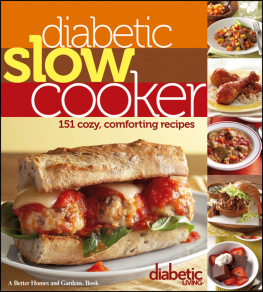

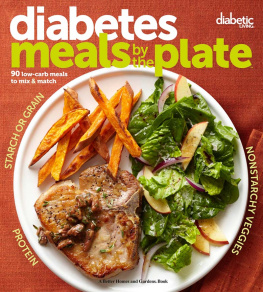
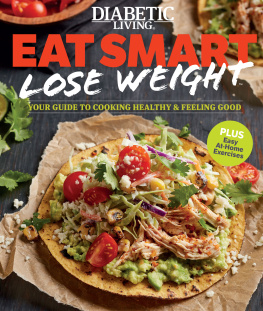
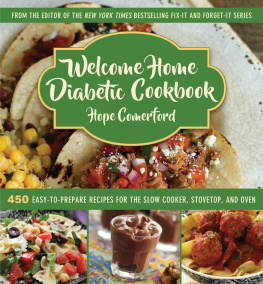


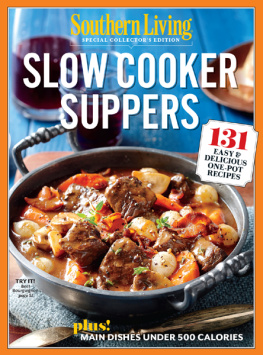






 v1.0313 Home Stretch Getting dinner on the table is often the last hurdle in a day of jumping from task to task. Thats why Im especially thankful for this collection of healthful and hearty recipes that makes my mealtimes a little calmer and evenings a little easier. The slow cookers in the Better Homes and Gardens Test Kitchen have been working overtime to dish out meaty stews and roasts, saucy sandwiches and pasta dishes, and potluck-ready appetizers. The best part: All of these recipes have been carb-counted and boosted with nutritious ingredientsso theyre diabetes-friendly for you and tasty for everyone at the table! Ive been sneaking more than a few of these treasured recipes home to test on my pickiest taster: my husband.
v1.0313 Home Stretch Getting dinner on the table is often the last hurdle in a day of jumping from task to task. Thats why Im especially thankful for this collection of healthful and hearty recipes that makes my mealtimes a little calmer and evenings a little easier. The slow cookers in the Better Homes and Gardens Test Kitchen have been working overtime to dish out meaty stews and roasts, saucy sandwiches and pasta dishes, and potluck-ready appetizers. The best part: All of these recipes have been carb-counted and boosted with nutritious ingredientsso theyre diabetes-friendly for you and tasty for everyone at the table! Ive been sneaking more than a few of these treasured recipes home to test on my pickiest taster: my husband. Jessie Shafer Food & Nutrition Editor, Diabetic Living
Jessie Shafer Food & Nutrition Editor, Diabetic Living 
 Slow Cooker Savvy Find out how to get the most out of this simple-to-use, time-saving meal maker. Meat Matters Never toss frozen raw meat directly into your slow cookerthe meat will thaw too slowly to remain safe to eat.
Slow Cooker Savvy Find out how to get the most out of this simple-to-use, time-saving meal maker. Meat Matters Never toss frozen raw meat directly into your slow cookerthe meat will thaw too slowly to remain safe to eat.